What To Do With Hydrangeas, Early July
What To Do With Hydrangeas, Early July
It’s early July on Cape Cod, the time when the blue hydrangeas are starting to flower or are in full bloom. The white Annabelles (Hydrangea arborescens ‘Annabelle’), the oak leaf (Hydrangea quercifolia) are also in flower, so it’s Hydrangea Heaven all over the Cape. As we celebrate, our customers also have questions about their plants, so here are some tips for mid-summer Hydrangea care.
“What about all those dead sticks?” Ideally, mophead and lacecap hydrangeas should have the dead canes removed by late-May, but if you haven’t already done that, do it now. Those bare sticks detract from the beauty of the plants, so get rid of them. Follow them from the top down until you hit a live stem, and cut just above any living branch. If the entire cane is dead, cut it near the ground. (It’s helpful to have a good pair of by-pass lopers for this job so you don’t have to get down on the ground to prune these plants.)
“I have spots on my hydrangea leaves! Will this kill the plant?” It’s common to have a bit of leaf-spot fungus on Hydrangea foliage. This often develops in response to cool, wet spring weather, but irrigation systems that are going off frequently can also contribute. Alter your lawn irrigation so that it doesn’t hit hydrangea leaves and is watering for a longer time but less often. Leaf spot can be unsightly but seldom kills plants. If you want to protect unblemished leaves at this time, spray with Revitalize, an organic fungicide, to help them stay clean.
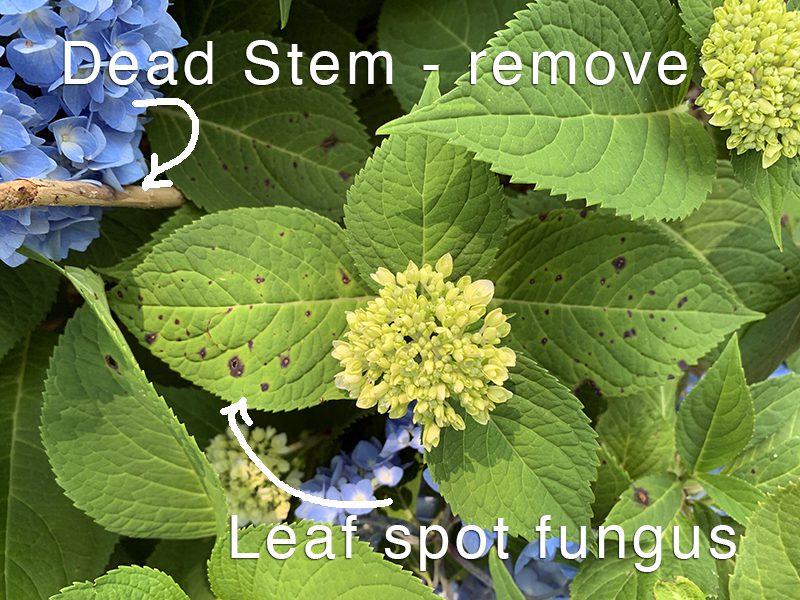
“My Hydrangeas are changing color!” First of all, know that the color on mophead and lacecap Hydrangeas develops over time when they first come into flower. The new flowers are pale and greenish before opening, and their color deepens as the flowers mature. Secondly, if your hydrangeas are changing from blue to pink they are probably being influenced by lime applied to a lawn or the leaching from cement or stone walkways and foundations. When Hydrangeas go from blue to pink it indicates that the pH of your soil is moving from acidic to alkaline. Likewise, if your pink Hydrangeas are turning purple, it’s a sign that your soil is acidic and the plant is responding with a color change.
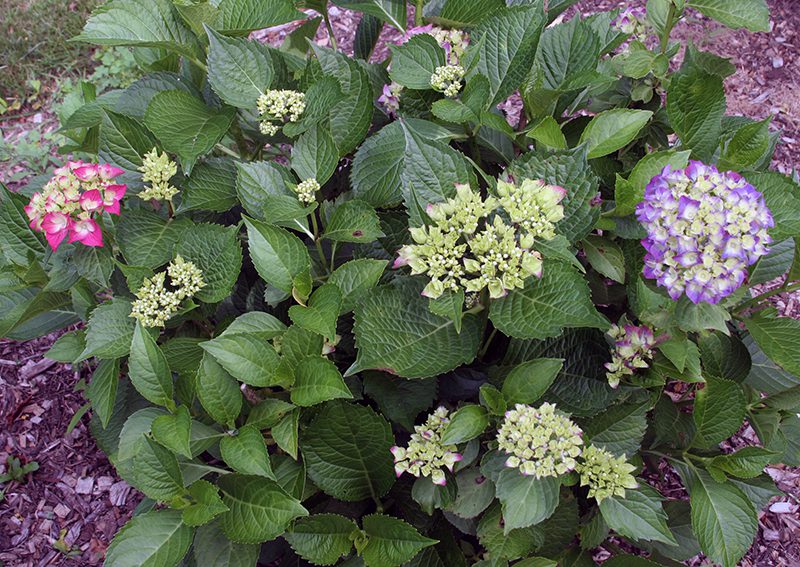
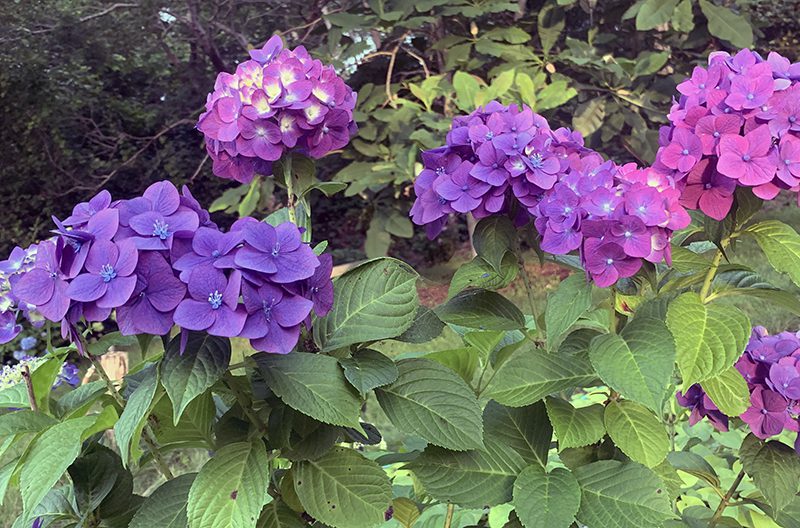
“My spouse cut the blue Hydrangeas back and now I only have a couple of flowers! Will it ever bloom again?” You are not alone. If a blue mophead or lacecap has few to no flowers this year, chances are it was trimmed back in the fall or spring. Although you might have few flowers this year (Endless Summer will produce a few in the fall) if the plants aren’t cut back again they will flower well next summer.
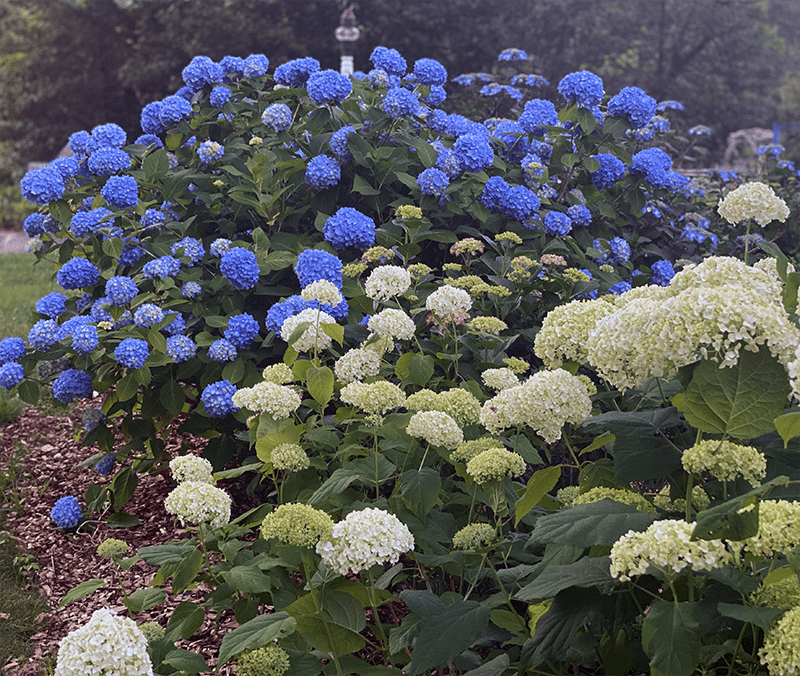
“My oakleaf hydrangea is getting huge! When can I prune it?” If you’re thinking of pruning to make it smaller, you won’t succeed. Pruning always stimulates growth and plants want to grow to be the size and shape that their genetics dictate. So make plans to move your shrub this fall to a location where it can grow large.
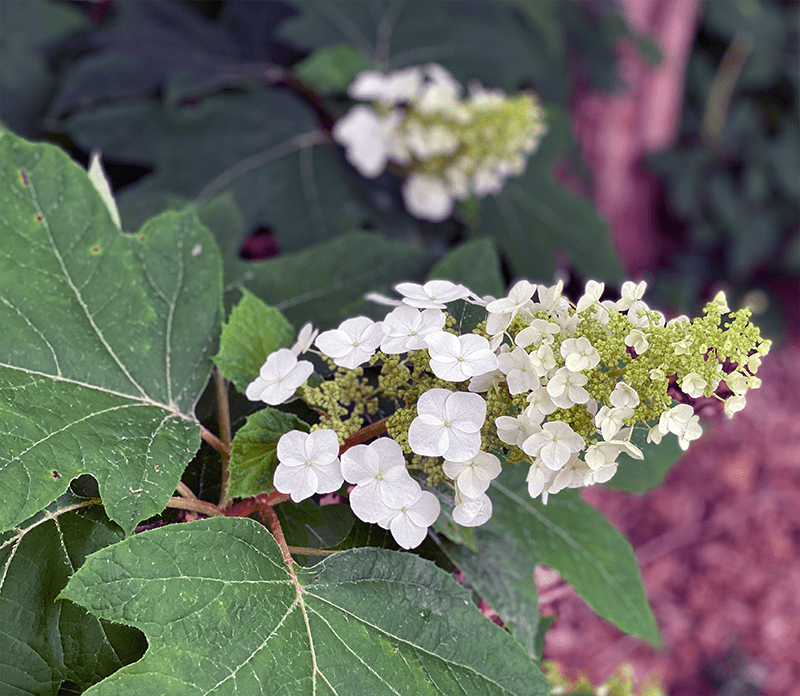
“My Hydrangeas are turning brown so quickly….” There are a couple reasons that the blue Hydrangea flowers might turn brown in July. The first reason is the hot weather. Even if these plants are watered regularly, in hot weather the plants loose water faster through their pores than the stems can take it up from the ground. This is even worse in hot and windy weather, which pretty much describes Cape Cod in July. If your blue Hydrangeas are in full sun, the damage happens even more quickly. To prevent browning, grow these plants in morning sun and afternoon shade.
Other possible causes of browning of Hydrangea flowers includes using too much aluminum sulfate in an effort to make them more blue, or fertilizer burn from too much synthetic fertilizer. Sometimes products applied to a lawn near a hydrangea will also damage the flowers. And finally, be careful about sun-warmed water coming out of a hose. If your hose has been in the sun all day, the water will be super hot when it first comes out; if that water is sprayed on flowers or foliage, it can kill the plant’s tissues.
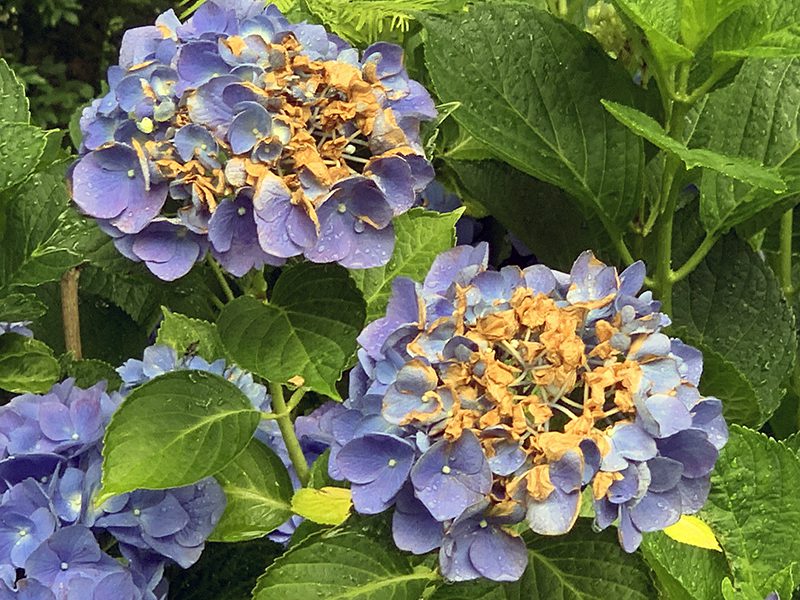
To keep your blue Hydrangeas looking their best, water deeply every four to six days, using a sprinkler or soaker hose and watering in the morning whenever possible. Mulch around your plants with the mulch of your choice to help suppress the weeds and retain moisture in the soil. Avoid fertilizing at this time of year.
Do not trim mophead or lacecaps back in the fall because this will result in fewer flowers next summer. These plants will be forming the germ of next year’s blooms in July and August this year. If your hydrangea is too large for the location where it’s planted, plan to move it in the fall.
If you are planting new Hydrangeas in the summer, water them well every other day for the first month, soaking not just the root-ball but the soil around the plant.
Don’t forget that Hydrangeas also make great container plants for shady porches, patios and decks.
Visit other gardens during the Cape Cod Hydrangea Festival from July 9 through the 18th! See the list “Garden Tours Schedule With Descriptions on this page for a list of gardens open each day and information about those gardens. Decide which gardens you would like to visit, and then print out this flyer with addresses ready to plug into your GPS. Durning the festival Hyannis Country Garden will have several “gram a garden” areas where you can take colorful photos to post. C.L. Fornari will offer a Hydrangea Happy Hour virtually the evening of July 9th, and there will be a floral and garden theme quilt show by the Bayberry Quilters of Cape Cod on July 10th and 11th.
2 Comments
Leave a Comment
Subscribe To Our Newsletter
Sign up for our weekly email about sales and events.

I love to harvest some of the blooms to bring into the house. How do you do this without damaging the plant.
If you are cutting blue mophead flowers, only cut the stems about 6″ long so you don’t remove too many of the flowers for next year. Those flower buds for 2023 are on the plant now, where the leaves are attached to the stem. If you want longer stems for drying, it’s best to just cut them short and then tape or wire a longer stem from another plant onto the short part so you can use them as needed in arrangements. Cut flowers in the morning.
If you’re cutting smooth varieties such as Annabelle, Incrediball, or Invincebelle Spirit, cut the stems as long as you like. This is also true for the panicle types such as Lime Light.